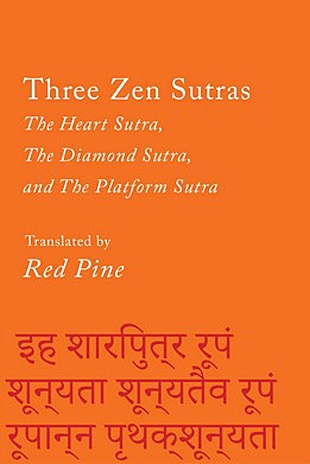The translator of this small volume is one of our best translators of Buddhist scripture and Zen poetry. These translations have all been previously published, separately, and are here slightly revised and put together into one compact book, the size to fit in a pants pocket. An introduction puts each classic text into context as a work of both religion and philosophy:
“When the people of ancient India began exploring who they were, they began the same way we might today. They concluded that there was something outside themselves and something inside, and they were somewhere in between. They called the outside rupa, or form, and the inside nama, what you can name but can’t see. Over time, they came up with a number of approaches to find the self they were certain was there, each with a different emphasis.”
In fact, Red Pine’s introduction is one of the more helpful and concise introductions to the origins and uses of Buddhist scriptures we know.
The Heart Sutra is the most commonly used text in Mahayana Buddhism. Its origins are likely in the second century BCE. It set out to challenge established teachings with “a mantra for chanting to go beyond conception-based understandings of reality.” The Diamond Sutra comes to us from the first century BCE. It focuses on the path of the bodhisattva. The Platform Sutra dates from the seventh century CE and is mostly a talk that Huineng, the Sixth Patriarch of Zen, gave to a large audience of mostly laypeople.
